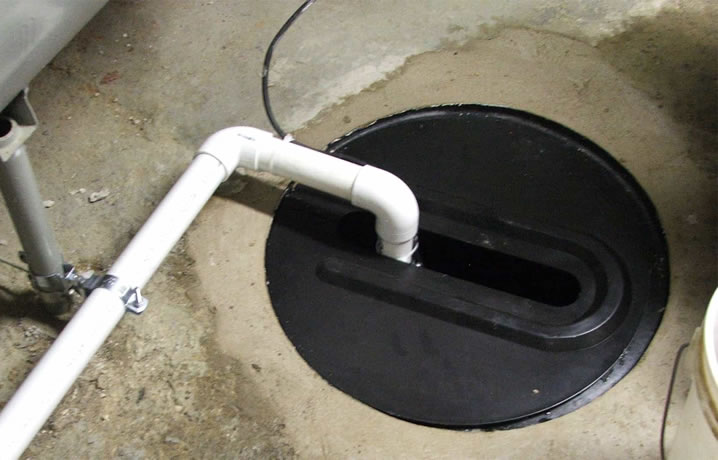What're your insights and beliefs about Steps to Cleaning Your Sump Pump Properly?

Sump pumps are vital elements in many homes, specifically in areas susceptible to flooding or excessive dampness. They aid avoid water damage by successfully eliminating excess water from basements or crawl spaces. However, like any other appliance, sump pumps call for routine maintenance to guarantee they work properly when required one of the most. Cleansing your sump pump is a vital part of its maintenance, and understanding exactly how to do it correctly can conserve you from pricey fixings and potential disasters.
Introduction
Preserving a clean sump pump is important for its appropriate performance and long life. Overlooking this crucial task can lead to obstructions, malfunctions, and inevitably, water damages to your residential property. As a result, learning just how to clean a sump pump is critical for house owners that rely upon these devices to maintain their cellars completely dry and safeguarded.
Understanding the Sump Pump
Before diving right into the cleansing procedure, it's essential to have a basic understanding of how a sump pump works. Commonly mounted in a pit or basin below the cellar flooring, a sump pump includes numerous vital components, including a pump, a float button, and a discharge pipeline. When water accumulates in the pit, the float button triggers the pump, which after that pumps the water out through the discharge pipeline, away from the building's structure.
Indicators of a Dirty Sump Pump
Knowing when your sump pump requires cleansing is critical for stopping prospective breakdowns. Some typical signs that suggest a filthy sump pump consist of weird noises throughout procedure, decreased water circulation, and visible debris in the pit. If you discover any of these signs, it's important to clean your sump pump immediately to stay clear of any further problems.
Preparing for Cleaning
Prior to you start cleaning your sump pump, it's necessary to take some safety preventative measures. Begin by shutting down the power to the pump to avoid any electric accidents. Additionally, put on ideal protective gear, such as handwear covers and goggles, to shield yourself from dust, particles, and possible virus.
Detailed Overview to Cleansing a Sump Pump
Shutting down the Power
Begin by detaching the power supply to the sump pump to stop any kind of mishaps while cleansing.
Getting Rid Of Particles and Dust
Use a container or a scoop to remove any kind of visible particles, dust, or debris from the sump pit. Dispose of the particles correctly to prevent it from clogging the pump or the discharge pipeline.
Cleaning up the Pump and Float Switch
As soon as the pit is clear of debris, meticulously eliminate the pump from the pit. Inspect the pump and the float switch for any indications of damages or wear. Make use of a soft brush or cloth to cleanse the surfaces and get rid of any collected crud.
Flushing the System
After cleansing the pump and float switch, flush the sump pit with clean water to get rid of any kind of staying dirt or debris. This will help guarantee that the pump runs efficiently and efficiently.
Looking For Proper Performance
Before re-installing the pump, carry out a quick examination to make certain that the float switch activates the pump appropriately. Pour some water into the sump pit and observe the pump's procedure. If everything is operating properly, you can reconstruct the pump and reconnect the power supply.
Upkeep Tips to Keep Your Sump Pump Clean
In addition to regular cleansing, there are numerous maintenance suggestions you can follow to maintain your sump pump in optimum problem:
Final thought
Cleansing your sump pump is an essential facet of its maintenance and guarantees that it runs successfully when you require it the most. By adhering to the actions outlined in this overview and incorporating regular upkeep into your regimen, you can extend the lifespan of your sump pump and shield your home from water damage.
How To Inspect And Clean A Sump Pump
There are a few things you may want to look for when inspecting your sump pump. These include:
Leaks: If you notice any leaks around the sump pump, it likely needs to be repaired or replaced. Mud or Water: If there is any mud or water around the sump pump, it’s likely that it’s not working properly and needs to be cleaned. Noises: If you hear any strange noises coming from the sump pump, it may be indicative of a problem. Next, you’ll need to clean the sump pump. If you notice any of these issues, it’s best to clean the sump pump as soon as possible. To do this, you’ll need to remove the pump from its housing. Be sure to have a bucket handy to catch any water that may spill out. Once the pump is removed, use a brush or a spray nozzle to clean off all of the mud and debris. You may also want to check the impeller for damage or wear and tear. If you find any damage, you’ll need to replace the pump.
Once the pump is clean, reattach it to its housing and replace any parts that were removed. Be sure to test the pump before putting everything back in place. Once everything is back in order, put the cover back on the sump pit and refill it with water.
https://elekplumbing.com/blog/how-to-inspect-and-clean-a-sump-pump/

As a fervent person who reads about Cleaning & Maintenance Tips for Your Home's Sump Pump, I assumed sharing that portion was sensible. Sharing is nice. Helping people is fun. We thank you for reading our article about Cleaning & Maintenance Tips for Your Home's Sump Pump.
Book